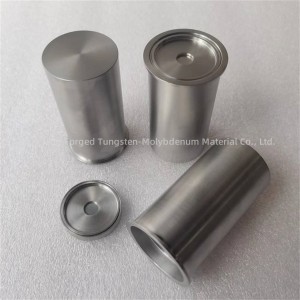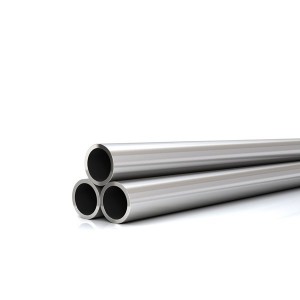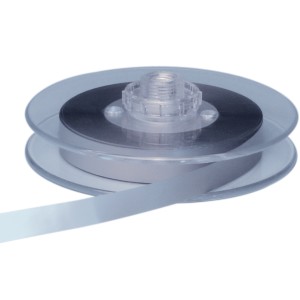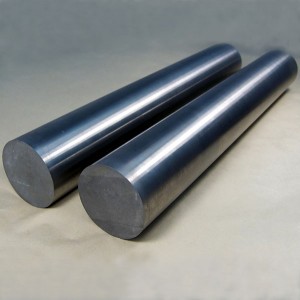tungsten melting pot crucible tungsten crucible with cover
The main characteristics of tungsten crucibles with lids include:
High melting point and boiling point: The melting point of tungsten crucible is 3420 ℃, the boiling point is 5660 ℃, and the density is 19.3g/cm ³ 2.
High purity: The purity generally reaches 99.95%.
High temperature resistance: suitable for high temperature environments above 2000 ℃.
Good thermal conductivity: low electrical resistivity, low coefficient of expansion, and low electron work function.
| Dimensions | As your requirement |
| Place of Origin | Henan, Luoyang |
| Brand Name | FGD |
| Application | Quartz glass melting |
| Shape | Customized |
| Surface | Polished |
| Purity | 99.95% Min |
| Material | W1 |
| Density | 19.3g/cm3 |

| Main components |
W>99.95% |
|
Impurity content≤ |
|
|
Pb |
0.0005 |
|
Fe |
0.0020 |
|
S |
0.0050 |
|
P |
0.0005 |
|
C |
0.01 |
|
Cr |
0.0010 |
|
Al |
0.0015 |
|
Cu |
0.0015 |
|
K |
0.0080 |
|
N |
0.003 |
|
Sn |
0.0015 |
|
Si |
0.0020 |
|
Ca |
0.0015 |
|
Na |
0.0020 |
|
O |
0.008 |
|
Ti |
0.0010 |
|
Mg |
0.0010 |
|
specifications |
Outer diameter tolerance(mm) |
Height tolerance(mm) |
wall thickness tolerance(mm) |
Bottom thickness tolerance(mm) |
Density(g/cm³) |
|
Φ180×320 |
+1.86 |
+2.76 |
+1.68 |
+1.79 |
+18.10 |
|
Φ275×260 |
+2.66 |
+3.16 |
+1.67 |
+2.76 |
+18.10 |
1. Our factory is located in Luoyang City, Henan Province. Luoyang is a production area for tungsten and molybdenum mines, so we have absolute advantages in quality and price;
2. Our company has technical personnel with over 15 years of experience, and we provide targeted solutions and suggestions for each customer's needs.
3. All of our products undergo strict quality inspection before being exported.
4. If you receive defective goods, you can contact us for a refund.

1.raw material preparation
2. Isostatic pressing
3. sinter
4. Car processing
5. Finished product inspection
Tungsten crucibles are widely used in various fields due to their high melting point, high density, good wear resistance, and corrosion resistance. Especially in rare earth metal smelting, the performance and lifespan of tungsten crucibles are crucial. Traditional welded crucibles have weld defects that affect their service life. The sintered tungsten crucible, due to its high density and purity, solves these problems and has become the preferred choice in the rare earth smelting industry.
During the growth process of sapphire crystals, the high purity and absence of internal cracks of tungsten crucibles greatly improve the success rate of seed crystallization. At the same time, they play a critical role in controlling the quality of sapphire crystal pulling, de crystallization, sticking to the pot, and service life.
Quartz glass melting also requires a high melting point tungsten crucible as the core container to ensure stability and yield at high temperatures. Tungsten crucibles can not only withstand extreme high temperatures in these applications, but also ensure the purity of materials and product quality.







Preventing dust from falling into the crucible: Covering the lid can reduce the entry of external dust into the crucible, thereby avoiding any impact on the experimental results.
Facilitating the volatilization of gas substances: A lid with a gap helps the gas to evaporate from the crucible, avoiding excessive internal pressure.
Avoiding ash spillage: When burning at high temperatures, covering the lid can prevent ash spillage and maintain a clean experimental environment.
Maintain the temperature inside the crucible: The lid helps to maintain stable temperature inside the crucible and improve burning efficiency.










